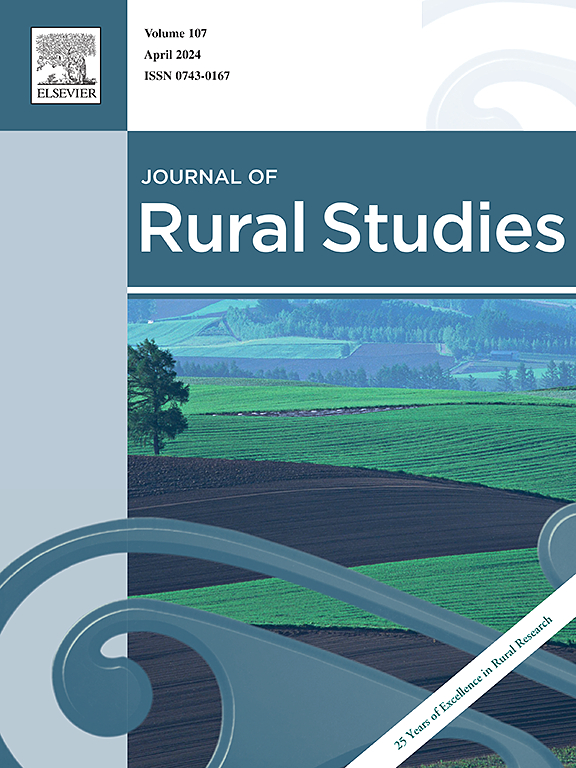Norwegian sheep farmers’ perception of the advantages and disadvantages of Precision Livestock Farming (PLF) technologies
IF 5.1
1区 社会学
Q1 GEOGRAPHY
引用次数: 0
Abstract
Despite enthusiastic industry and policy developments around Precision Livestock Farming (PLF) technology, it is unclear how often the development of new tools is centred around farmers' needs and means. This study aimed to identify the perceived benefits and disadvantages of PLF technology on Norwegian sheep farms. Semi-structured interviews were conducted with 24 Norwegian sheep farmers who use one or more PLF tool. Participants were between 35 and 70 years old, were from three Norwegian regions and farmed between 20 and 400 ewes. The most used technologies were GPS collars monitoring sheep location and registration software. Interview transcripts were analysed using reflexive thematic analysis and six themes were identified: Resources and Savings, Gaining Control, The User Experience, The Human-Animal Relationship, Trust in Technology and Stewards of the Land. The identified advantages of technology use were time, energy and economic savings that lightened farmers' cognitive burden, offered an increased sense of control gained through access to new data, an improved relationship between the farmers and their sheep, and an increased ability to preserve their farming lifestyle and the land they farm on. However, these benefits were not unanimously agreed upon, with many participants suggesting that the economic costs outweighed the time and energy savings, that farmers’ cognitive burden actually increased, that sellers and digital information could be untrustworthy and that technology posed a risk to the quality of the human-animal relationship. These findings could inform the future development and applications of user-centric PLF products to support the resilience of farming communities.
挪威牧羊农民对精准畜牧业(PLF)技术的优缺点的看法
尽管围绕精准畜牧业(PLF)技术的行业和政策发展热情高涨,但尚不清楚新工具的开发是否以农民的需求和手段为中心。本研究旨在确定PLF技术在挪威绵羊养殖场的好处和缺点。对24名使用一种或多种PLF工具的挪威羊农进行了半结构化访谈。参与者年龄在35岁到70岁之间,来自挪威的三个地区,养了20到400只母羊。最常用的技术是GPS项圈监测羊的位置和登记软件。使用反身性主题分析分析访谈记录,确定了六个主题:资源和储蓄、获得控制、用户体验、人与动物关系、对技术的信任和土地的管家。技术使用的优势是节省时间、能源和经济,减轻了农民的认知负担,通过获取新数据增强了控制感,改善了农民和他们的羊之间的关系,提高了保护他们的农业生活方式和耕种土地的能力。然而,这些好处并没有得到一致同意,许多参与者认为经济成本超过了时间和能源的节省,农民的认知负担实际上增加了,卖家和数字信息可能不值得信任,技术对人与动物关系的质量构成了风险。这些发现可以为未来以用户为中心的PLF产品的开发和应用提供信息,以支持农业社区的复原力。
本文章由计算机程序翻译,如有差异,请以英文原文为准。
求助全文
约1分钟内获得全文
求助全文
来源期刊

Journal of Rural Studies
Multiple-
CiteScore
9.80
自引率
9.80%
发文量
286
期刊介绍:
The Journal of Rural Studies publishes research articles relating to such rural issues as society, demography, housing, employment, transport, services, land-use, recreation, agriculture and conservation. The focus is on those areas encompassing extensive land-use, with small-scale and diffuse settlement patterns and communities linked into the surrounding landscape and milieux. Particular emphasis will be given to aspects of planning policy and management. The journal is international and interdisciplinary in scope and content.
 求助内容:
求助内容: 应助结果提醒方式:
应助结果提醒方式:


